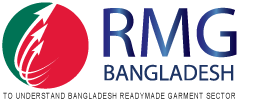The global toy market is poised for extraordinary growth, with projections by the market analysis firm Statista estimating its value will soar from $102.8 billion in 2023 to approximately $150 billion by 2032. Despite this booming market, Bangladesh remains an underdog in the sector. However, with proper policy support and entrepreneurial initiatives, the country’s toy industry has the potential to become a leading foreign exchange earner, second only to the ready-made garments (RMG) industry.

Many Bangladeshi businesses have yet to recognize the export potential of the toy industry. Interestingly, several global fashion retailers who already source garments from Bangladesh also run toy lines. This overlap presents an untapped opportunity for Bangladeshi manufacturers. According to the Export Promotion Bureau (EPB), the country’s toy exports reached $77 million in the last fiscal year, serving about 88 countries. While this is a notable achievement, it pales compared to China, which dominates the industry with an 86% global market share, exporting $88.58 billion worth of toys in 2023 alone.
Bangladesh’s toy manufacturing industry, like its RMG sector, produces items tailored to buyer specifications. The toy sector encompasses four primary categories: metal-based, wooden-based, plastic-based, and fabric-based products. However, foreign companies in Bangladesh currently dominate toy exports, with local firms contributing only a small portion.
Leading Exporters and Success Stories
One of the key players in Bangladesh’s toy export market is Sonic (Bangladesh) Limited, a subsidiary of the Hong Kong-based Sonic Group. Operating from the Uttara Export Processing Zone in Nilphamari, Sonic produces over one million die-cast scale models each month, including replicas of international rally-winning cars. These models are primarily exported to European countries like Spain, Germany, and Italy, along with Japan. In 2023, Sonic’s exports totaled $43.17 million, making it the largest toy exporter in Bangladesh.
Another noteworthy company is Cupcake Exports Ltd, a subsidiary of the US-based Cupcake Group. This fabric-based toy manufacturer started operations in 2019 and has grown from employing 65 workers to over 600. Despite challenges like the COVID-19 pandemic and geopolitical tensions, the company’s export value is expected to reach $2.5 million this year. However, the absence of dedicated toy buyer offices in Bangladesh forces companies like Cupcake Exports to conduct business abroad, adding logistical hurdles.
Challenges and Barriers to Growth
While Bangladesh’s toy sector shows promise, several challenges hinder its growth. One major obstacle is the lack of buyer offices within the country, making it difficult for manufacturers to secure large-scale orders. Exporters also face barriers in obtaining the certifications required for producing licensed toys, which are in high demand among international retailers. For instance, companies like Disney require compliance with the Better Work program to manufacture licensed products. Although Bangladesh’s RMG and footwear sectors are part of this program, the toy industry is yet to be included.
Packaging and product testing are additional challenges. Exporters must import packaging materials to meet buyer specifications, and samples often need to be sent abroad for quality testing, increasing production costs and lead times. Addressing these bottlenecks could significantly enhance the competitiveness of Bangladeshi toy manufacturers.
Learning from the RMG Sector
Bangladesh’s RMG sector offers valuable lessons for the toy industry. The expertise gained in dealing with international buyers, managing supply chains, and meeting global standards can be leveraged to scale toy exports. Many established fashion brands that source garments from Bangladesh, such as Walmart and Inditex, also feature toy lines, providing a ready market for local manufacturers.
Policy Support: A Critical Fact
Industry leaders emphasize the importance of government support in realizing the toy sector’s potential. Kamruzzaman Kamal, Marketing Director at PRAN-RFL Group—a key exporter of plastic toys—believes that targeted policies could help Bangladesh emerge as a significant player in the global toy market. PRAN-RFL has already expanded its exports to several countries, producing low-cost toys and tricycles. The company aims to diversify its portfolio by introducing higher-end products for the export market.
To compete with global giants like China, Bangladesh must address wage competitiveness and labor-intensive production. According to Dr. Mashrur Reaz, founder of the think tank Policy Exchange of Bangladesh, rising wages in China are prompting its gradual exit from the low-cost toy market. This shift creates an opportunity for Bangladesh to capture a significant share of the market, provided the right policies are implemented. Dr. Reaz estimates that the sector could generate up to $10 billion in annual exports with proper investment and policy alignment.
Capitalizing on Emerging Trends
The global toy market is not limited to traditional toys; it also includes electronic toys, educational kits, action figures, and board games. Diversifying into these segments could unlock new opportunities for Bangladeshi manufacturers. Engaging with licensing giants like Disney and securing Better Work certification for the toy industry could attract both foreign and local investment.
Additionally, strengthening infrastructure for product testing and certification within Bangladesh would reduce dependency on foreign facilities, streamlining operations and boosting competitiveness. Developing a skilled workforce for the toy industry, much like the initiatives undertaken in the RMG sector, is another critical step.
A Way Forward
With a strategic approach, Bangladesh’s toy industry could replicate the success of its RMG sector. By fostering collaboration between the government, local manufacturers, and international buyers, the sector can overcome existing challenges and establish itself as a key player in the global market. Addressing barriers such as certification, packaging, and testing, while leveraging the expertise gained from the RMG sector, will be instrumental in this journey.
The global toy market’s rapid growth presents an unparalleled opportunity for Bangladesh. With the right mix of policy support, innovation, and entrepreneurial effort, the country can transform its toy industry into a major foreign exchange earner, driving economic growth and enhancing its global standing.
















